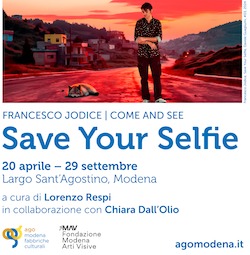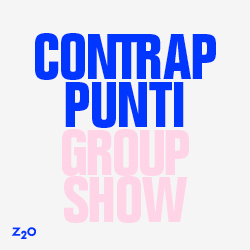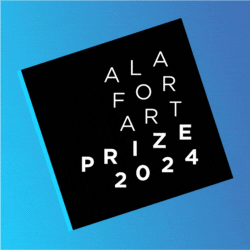[nemus_slider id=”41932″]
Interview with Anna Franceschini and Stephanie von Gelmini on MECHANICALLY YOURS, solo show by Anna Franceschini at Kunstverein für die Rheinlande und Westfalen, curated by Stephanie von Gelmini (on view until 19th April 2015)
MECHANICALLY YOURS is the first extensive exhibition in the German-speaking countries by the Italian artist and filmmaker Anna Franceschini. The exhibition space is turned into a stage for moving images. Just as actors have their roles in a play, the individual works here also have their entrances and exists. Presented in differing projection situations, the films, short and long loops as well as filmic triptychs that are linked cyclically stand in a spatial and temporal relationship to each other. The sequence of the pieces is consequently structured in an infinite filmic loop and accordingly functions as a connective stylistic means. The arrangement of the individual works follows a complex score that is targeted at their atmospheric interaction on the one hand as well as to enable the viewer to focus on each of them individually on the other. In the process, motion and immobility, sound and silence, the mysterious and the banal in Franceschini’s pictorial world are interwoven.
ATP: Let’s start from how you organized the exhibition space that hosts your artworks in the exhibition “Mechanically Yours” at Dusseldorf Kunstverein. How did you imagined it?
Anna Franceschini: The space of the Kunstverein is a single room that develops in depths (it could be compared to a oversized corridor); I thought it would have been a challenge to have all the videos, films and installations, with or without sound, put together in a continuum and make them work as parts of a composition, extending the idea of ‘montage’ from a individual film or video piece to a physical space.
Stephanie von Gelmini: In the composition of the score we focus on the one hand, the rhythm and the setting of different visual and acoustic emphases, on the other we work out contents connections between the single works. In Anna’s works we find frequent references to the origins of cinema, to the cinema of attractions, as well as reflections on the medium itself. So for example we create a relation between A SIBERIAN GIRL and IT‘S ABOUT LIGHT AND DEATH (TO JOSEPH PLATEAU).
A SIBERIAN GIRL (2012) is a reference to the narration of Bèla Belázs, in which he describes the experience of a Siberian girl, who attends for the first time a cinematographic projection. Arriving from a desolate land, unknowing about the new technological achievements who invigorate the metropolises at the beginning of the century, she describes this vision disgusted as a cruel fragmentation of the figures. Therewith she refers to the shots, who show details of the human body. We also recover those close-ups in Anna’s representation of the figurine from the museum Ca´da Noal at Treviso. Thereby she is interested in the cinematographic aspect, in the steadily link to the oscillation between reality and fiction.
IT‘S ABOUT LIGHT AND DEATH (TO JOSEPH PLATEAU) (2011) is a homage to the Belgian physicist Joseph Plateau, who as one of the first to harness the stroboscopic effect for the illusion of motion sequences, an important step for the development of cinema. One of the precursors of cinematography, the phenakistoscope, a simple optic device, which mechanically generates animated pictures, makes use of exactly this stroboscopic effect. It was utilized in amusement parks before its entry in many households as a toy for children. Different kind of drawings were animated, illustrations of animals included, to generate wonder and astonishment among the audience. In a taxidermy workshop Anna shot stuffed animals with the help of the stroboscopic effect, in doing so reanimating them and investigating thereby the border among life and death and the perception of these objects as a remnant of a living being, which now stands for a eternal representation of life. Thereby she refers to the functionality of the cinema, which have done exactly this since its beginning, stringing together inanimate images to create the illusion of a perpetual, infinite movement. So we created through the positioning and the sequence of the works many small links and cross references, which draw through as a red thread the whole score. A particular role in the show takes up the work UNTITLED (2012). It is the only work which is continuously shown during a whole run of a exhibition-loop. You can describe these figurine revolving around itself as the fixpoint of the exhibition. In its infinite circumduction it not only mirrors the overall plan of the show, but rather alludes through the course of the cutscene at the thereby arising movement of the visitor.
ATP: Together with the curator you gave different “roles” to the artworks, as if they were characters in a theatrical piece. What are the links between the projections?
AF: The nexus among the different projections are of different nature. As my work is most of the time ‘non narrative’ we thought that the best would have been to not stress on a dramatic structure of the space, but focus on rhythm and weight of the installations. We conceived a choreography that literally used the pieces as dancers that guide the audience along the entirety of the space focusing on one ‘act’ after the other, with some overlap that function as distraction at the periphery of the visual field. I worked on a timeline that included eight different layers (number of projections + monitors) to visualize both spatial and temporal qualities of the show. At the end we had a rendering with a ‘duration’ and I knew in advance that my show would have lasted 40 minutes.
SVG: Consciously we forego at a static exhibition architecture, like it is generally used during video exhibitions and instead developing a unusual presentation form. The idea of the loop, the filmic infinite loop, serves thereby as starting point and as a connective stylistic means for the conception of the show.
During scarce 40 minutes combinations of several works appear on differing projection areas on specifically assigned positions, whereby each work is shown only in one combination and not always all positions are showing. Therefore a cyclical structure arises, through which the works are linked in a spatial and temporal relationship to each other. The complete sequence of works is configured as a loop, a stylistic quality that we also find in Anna’s works. The medium of the loop can also be described as a rotary motion, which we also relocate in the camera work or in some of her rotating subjects. The arrangement of the individual works follow a complex score that is aimed towards their atmospheric interaction on one side as well as to enable the viewer on the other side to focus on each of them individually. Thereby the exhibition space is turned into a stage for moving images. Just as actors have their roles in a play, the individual works also have their entrances and exits. In the process, motion and immobility, sound and silence are interwoven. The visitor is located in a visually and aurally full and demanding moment, as well as at times in quiet nearly empty ones. The works „circulate“ through the room or „flare-up“ and the viewer, consistently himself in motion, is conducted through the room by the succession of the works.?
ATP: The exhibition gathers your production from 2009 to 2015. How does it feel to see all of your artworks together?
AF: It felt quite good! Although it is not my entire production, but a carefully selected body of work, the feeling is that a big portion of myself, even for a limited amount of time, is standing there, somehow staring at me from a distance.
ATP: In my opinion, there’s a connection that ties together all your production: several of the locations in which your videos take place are characterized by uncertainty. Spaces are not defined and have a sort of baffling ambiguity. What do you think about mine observation?
AF: I think it’s correct from the observer point of view. From my perspective the selection of the location it’s crucial. My practice, except for the most recent one, is not studio based, therefore the picking of a place, activity or object it’s already an active part of the process of creation. Then, the result it’s not always revealing and the act of filming it’s the moment when the subjectivity plays its role. But it’s a place of tension between a utopian neutrality of the observer towards the phenomenon and the ‘presence’ of the filmmaker.The core of my research lies in that moment, constantly unstable but desperately looking for an equilibrium.
ATP: Details, mechanism, long tracking shots: the shots, in your videos, seem to hesitate on reality, they try to unveil its hidden sides. I think about “The SIberian Girl”. “Rock-Paper-Scissors” and “Stuffed Shirt”. Instead, in your last artworks, you tell a different kind of reality, made by collections and details I’d describe as “devised”. Is this difference I noticed wanted or is it more a consequential development of your practice?
AF: It came quite natural. It origins from the same search but it zoomed in, to focus on objects instead of spaces; the unattainability of object-hood, the possibility of a disclosure that never happens it’s the region of imagery and image regime that I want to investigate now. I don’t exclude to zoom out again and get back to longer and wider shots…
ATP: You produced a new artwork, “Kunstschnee (Artificial Snow), specifically for this exhibition. Could you tell me about that?
AF : Kunst means artificial but also art (as artistic and artificial belong to the same semantic basin). The work was shot in an artificial sky piste complex that also produces and sells snow for 80 euros each cubic meter. That was already enough striking to me. I didn’t know that snow could turn into a commodity.The sky halle is peculiar on many other extents: it’s a major private investment that barely break-even in the last few years against a consistent attendance all over the year; architectonically has a big impact on the landscape; the interior decoration draws codes from the Tyrolese vernacular mixed with high tech skying esthetics. The snowplough became my ‘dolly’. I worked on a 3 channel video installation adopting, alternatively, linguistic strategies that belong to video games and classical experimental filmmaking, a snowed quest in darkness, that sometimes takes some rest in favor of a lyrical escape.
Anna Franceschini
MECHANICALLY YOURS
February 7th until April 19th 2015
Der Kunstverein für die Rheinlande und Westfalen
Grabbeplatz 4 – 40213 Düsseldorf
www.kunstverein-duesseldorf.de
KUNSTSCHNEE
(excerpt, one channel version)
16 mm transferred to digital, 3 channel video installation, color – mute, original duration: 4′ 59”, 2015
Produced by Kunstverein für die Rheinlande und Westfalen
Courtesy: the Artist and Kunstverein für die Rheinlande und Westfalen
THE STUFFED SHIRT
Part_1: VOILA’
Part_2: CARRELLO
16 mm film transferred to digital, 3 channel video installation, color – sound, 2012
Produced by Peep-Hole – Milano and VISTAMARE | Benedetta Spalletti – Pescara
Courtesy: the Artist and VISTAMARE | Benedetta Spalletti – Pescara
THE PLAYER MAY NOT CHANGE HIS POSITION
(excerpt)
Video, Full HD, color, sound, original duration: 17’, 2009
Produced with the support of Rijksakademie van Beeldende Kunsten
Courtesy: the Artist and Vistamare | Benedetta Spalletti – Pescara
A SIBERIAN GIRL
16 mm film, colour – mute, 1’, 2012
Courtesy: the Artist











